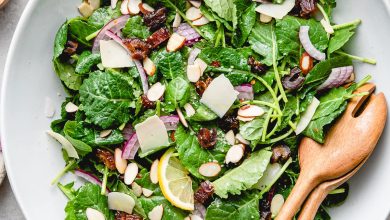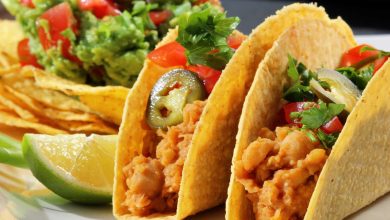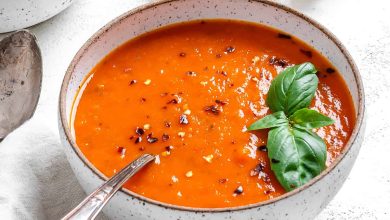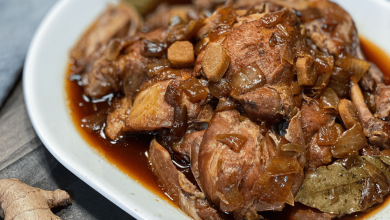🍔 Backyard Burgers: A Delicious Classic 🍔
Backyard Burgers are a quintessential American favorite, offering a mouthwatering combination of a juicy patty, fresh toppings, and a soft bun. Let’s dive into the history, components, steps to prepare, and the time needed to whip up this delightful dish! 🍔
History:
The history of the burger is a bit hazy, but it’s widely believed to have originated in the United States in the early 20th century. A classic story credits Louis Lassen of Louis’ Lunch in New Haven, Connecticut, with creating the first hamburger in 1900. Since then, burgers have become an integral part of American culinary culture and have evolved into various forms, including the beloved Backyard Burger.
Components:
- Patty: The heart of a Backyard Burger is a ground beef patty. You can choose your preferred type of beef, such as chuck or sirloin, or even explore alternatives like turkey, chicken, or plant-based options.
- Bun: A soft, toasted bun is crucial. You can opt for classic white buns or experiment with whole wheat or brioche for added flavor.
- Toppings: The possibilities are endless, but common toppings include lettuce, tomato, onion, cheese (often cheddar or American), pickles, and condiments like ketchup and mayonnaise.
- Seasonings: To enhance the patty’s flavor, you’ll need salt, pepper, and perhaps some herbs and spices.
- Optional Extras: Get creative with toppings like bacon, sautéed mushrooms, avocado, or a fried egg.
Steps to Prepare:
- Preparation: Start by prepping your ingredients. Form the ground beef into burger patties, season them with salt and pepper, and let them come to room temperature.
- Grilling: Fire up your grill to medium-high heat. Place the patties on the grill and cook for about 4-5 minutes per side for medium-rare. Adjust the time for your desired level of doneness.
- Toasting Buns: While the patties are grilling, lightly toast the buns on the grill for a minute or so until they’re golden brown.
- Toppings: Arrange your favorite toppings on a platter for easy assembly.
- Assembly: Once the patties are cooked to your liking, place them on the toasted buns. Add cheese while they’re still hot so it melts. Then, layer on the toppings and condiments.
- Serve: Place the top bun on your masterpiece, secure it with a toothpick if needed, and serve your Backyard Burger with a side of fries, coleslaw, or a crisp salad.
Time Needed:
The time required to prepare Backyard Burgers depends on various factors, such as the thickness of the patties, the type of meat, and your desired level of doneness. On average, you can expect to spend around 15-20 minutes on the actual cooking process. Prepping and assembling the ingredients might add another 10-15 minutes. So, in total, you’re looking at approximately 25-35 minutes from start to finish.
Now you’re all set to create your own Backyard Burger masterpiece! Enjoy your delicious burger adventure! 🍔😋
🍔 Backyard Burger Nutrition and Health Information 🍔
While Backyard Burgers are undoubtedly delicious, it’s essential to be aware of their nutritional content and consider how they fit into your overall diet. Here’s some key nutrition and health information to help you make informed choices:
Nutrition Facts (approximate values for a standard beef patty burger with common toppings):
- Calories: A typical backyard burger can range from 250 to 800 calories or more, depending on the patty size, type of meat, toppings, and condiments.
- Protein: You can expect about 12-25 grams of protein in a burger, mainly from the patty and cheese.
- Carbohydrates: The bun and any added extras like ketchup may contribute around 30-45 grams of carbohydrates.
- Fats: Burgers can contain around 10-40 grams of total fat, primarily from the patty and cheese.
- Saturated Fat: Saturated fats can vary, but a burger with bacon and cheese may have 10-20 grams or more.
- Fiber: Generally, there’s little to no dietary fiber in a traditional burger.
- Sodium: The sodium content can be significant, with 500-1,200 mg or more, primarily from the patty, cheese, and condiments.
- Vitamins and Minerals: Burgers offer some essential nutrients like iron and B vitamins, but they may be limited compared to whole-food options.
Health Considerations:
- Portion Control: Be mindful of portion sizes. Oversized burgers can contribute excess calories and unhealthy fats.
- Meat Choice: Consider leaner meats like turkey or chicken, or explore plant-based alternatives to reduce saturated fat content.
- Toppings: Load up on veggies like lettuce, tomatoes, and onions for added fiber and nutrients. Opt for low-sodium condiments and choose whole-grain buns when possible.
- Balanced Diet: Enjoying a Backyard Burger occasionally as part of a balanced diet is absolutely fine. Incorporate plenty of fruits, vegetables, and whole grains into your daily meals to ensure a well-rounded nutrition intake.
- Hydration: Drink plenty of water to help balance the sodium intake typically associated with burgers.
Remember that these values can vary widely based on the specific ingredients and preparation methods you choose. If you’re interested in precise nutrition information, it’s a good idea to consult a food nutrition database or the packaging of the products you use to get accurate numbers for your specific burger.
Enjoy your Backyard Burger, but do so in moderation and in the context of an overall healthy eating pattern! 🍔🥗🥤








